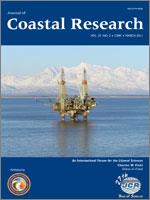A nested configuration of the Regional Ocean Modeling System (ROMS) is used to study the seasonal circulation patterns and mesoscale activity of the Eastern Brazilian Margin (EBM). The EBM encompass an oligotrophic and bathymetrically complex zone in the NW South Atlantic from 8°S to 20°S. Sea-level anomaly data are used to validate the model. Analysis of the mean circulation reveals that the EBM is dominated by seasonal and spatial dynamics of the southward Brazil Current (BC) and the northward North Brazil Undercurrent (NBUC), as well as their connection to the South Equatorial Current (SEC) dynamics. The EBM can be divided in three dynamic provinces, which are seasonally connected either by the permanent main flow or by mesoscale process. In the northern province, from 8°S to 13°S, the NBUC is the major permanent feature and the BC is just a thin flow, confined to the top few meters. As it moves southward, the BC gets deeper and stronger. In the middle province, from 13°S to 16°S, the dominance of the top 0–100-m circulation is seasonally alternated between the southward BC flow and the northward NBUC flow. In the southern province, from 16°S to 20°S, the BC appears as a dominating surface feature. While on the top (0–100 m) the main current presents a pronounced seasonal and spatial variability, on subsurface waters (100–500 m) the NBUC connects the EBM continuously. Finally, analysis of the regional simulation reveals well-defined cyclonic and anticyclonic eddies. They detach from the main flow and translate along the domain throughout the year. The translation patterns are associated with the seasonal variability of the main EBM flow, with anticyclonic mesoscale features translating southward and mesoscale cyclonic features translating northward. On their pathway, these features may come very close to the margin, interacting with the near-shelf flow.
BioOne.org will be down briefly for maintenance on 17 December 2024 between 18:00-22:00 Pacific Time US. We apologize for any inconvenience.
How to translate text using browser tools
1 March 2011
Mean Circulation, Seasonal Cycle, and Eddy Interactions in the Eastern Brazilian Margin, a Nested ROMS Model
Lúcio Figueiredo Rezende,
Paulo Alves Silva,
Mauro Cirano,
Álvaro Peliz,
Jesus Dubert
ACCESS THE FULL ARTICLE

Journal of Coastal Research
Vol. 27 • No. 2
March 2011
Vol. 27 • No. 2
March 2011
Abrolhos
Bahia
Camamu
eddies and mesoscale processes
numerical modeling
ROMS




